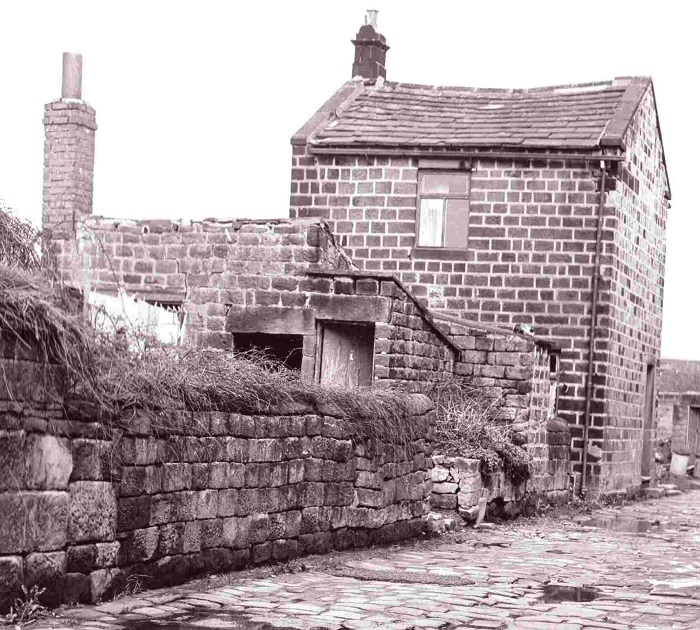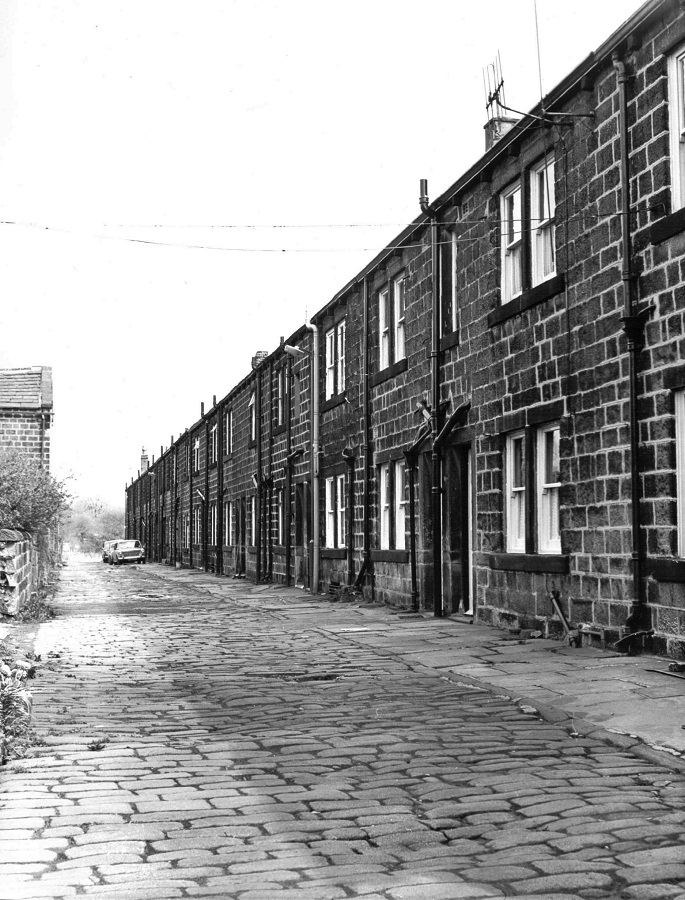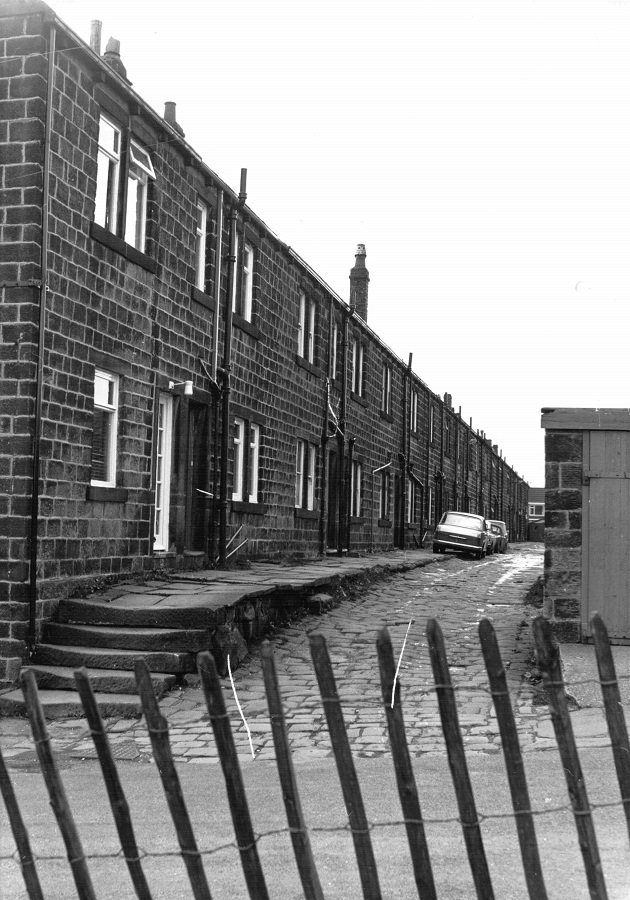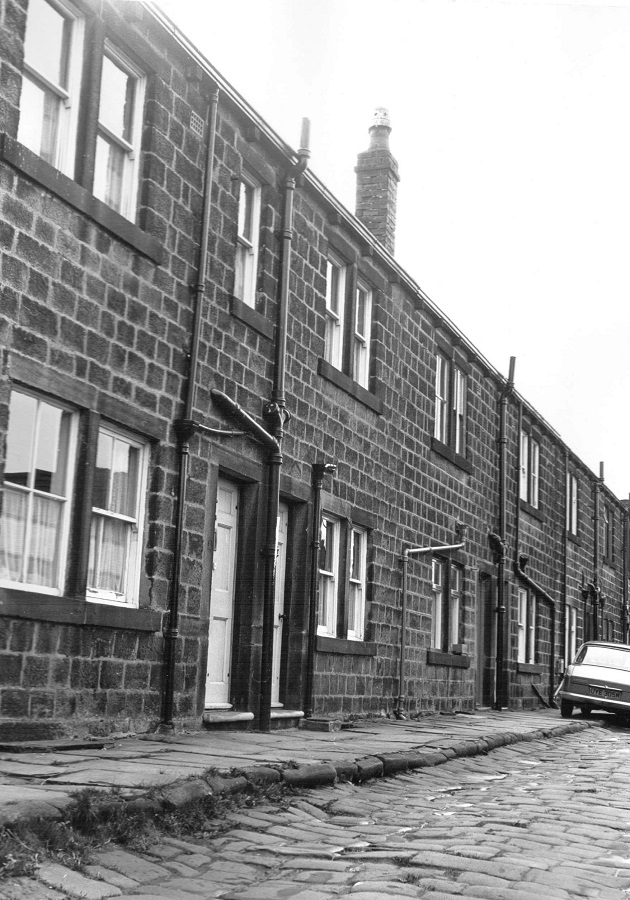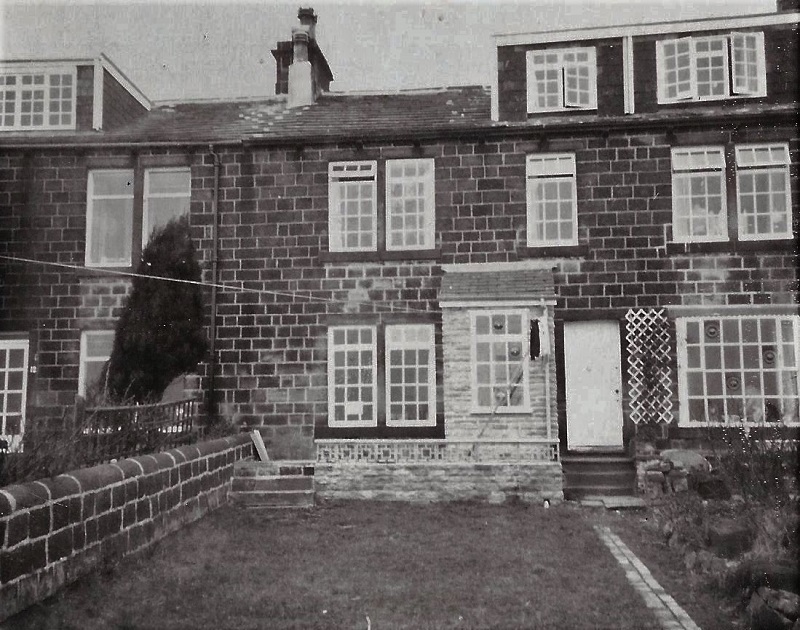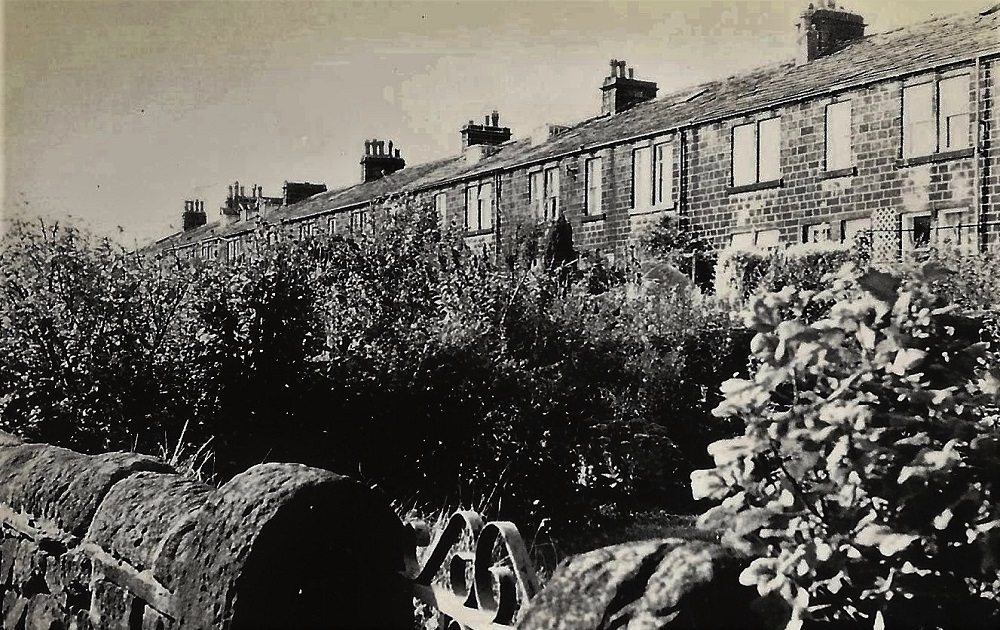| Title | Mount Pleasant |
| Date | 1960s |
| Location | Guiseley |
| Photo ID | H210 |
| Comment | This image of a wash house to the rear of the property was donated by Jack and Pat Halliday who told us “Pat’s parents lives at 3 Mount Pleasant, her father Eddie Armitage took this photo. He was a member of Aireborough Camera Club”. A traditional peggy or wash tub is on the left. The sink has a cold water tap. Water could be heated in the set-pot or copper on the right. Photographer Eddie Armitage, donated by Jack and Pat Halliday. |
Mount Pleasant – c1970s
Mount Pleasant is a terrace of stone houses off Town Street (Moor Lane). Many were occupied by hand loom weavers. The long gardens behind the houses were often unfenced so some could be shared to tenter cloth i.e., stretch out the cloth on hooks to dry so it would keep its shape and not shrink.
The phrase “to be on tenterhooks” comes from this process.
Previous Comments:
jdathebowler
The houses were built sometime in the mid 1800’s. They were originally weavers cottages. The cloth was produced in the upstairs part of the house. The domestic production of cloth was soon superseded by the mass production of cloth produced in the new mills being built. The weavers lost their livelihood and had to find employment in the mills.
09 January 2014.
Consolidated by Linda Plonka. 28 February 2022.
Last updated: 01 March 2022.

